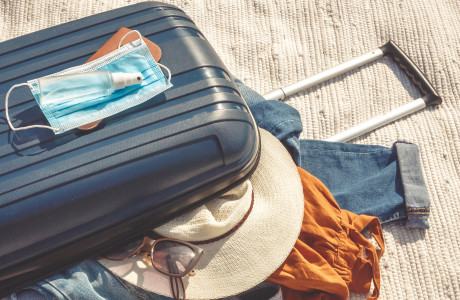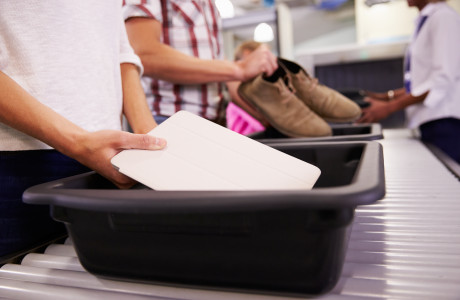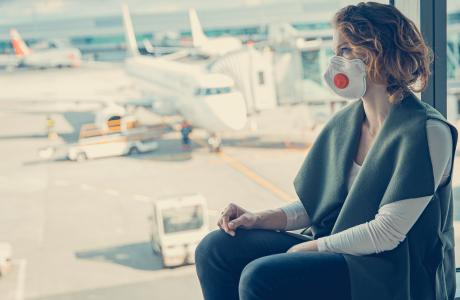
How high is the risk of infection on the plane?
The anticipation of the next holiday, the excitement before the plane takes off - due to the coronavirus, such feelings had to be largely dispensed with in 2020. Instead, there was often the worry of catching the virus during the trip. The corona pandemic is creating a sensitive awareness of issues that until now have been given little thought, even at the height of the annual flu epidemic. But how high is the risk of infection on the plane? Is the risk a cause for concern? Can you get on a plane with a clear conscience or should you rather avoid air travel? We have compiled all the important information on the risk of infection on planes for you.
Danger of infection in the aircraft: aerosols as a risk factor
If you look at the situation in the cabin from a distance, the risk of infection on an aeroplane seems quite high at first. Especially if you look at the transmission routes of coronaviruses in this context. The most common form of infection is transmission via aerosols. These small aerosol particles are transmitted via the breath, are extremely small and, to make matters worse, invisible. As a passenger, you cannot tell at any time whether you are in contact with foreign aerosols or not. The distance that experts say should be kept and also the recommended intermittent ventilation seem impossible in an aircraft cabin, don't they?
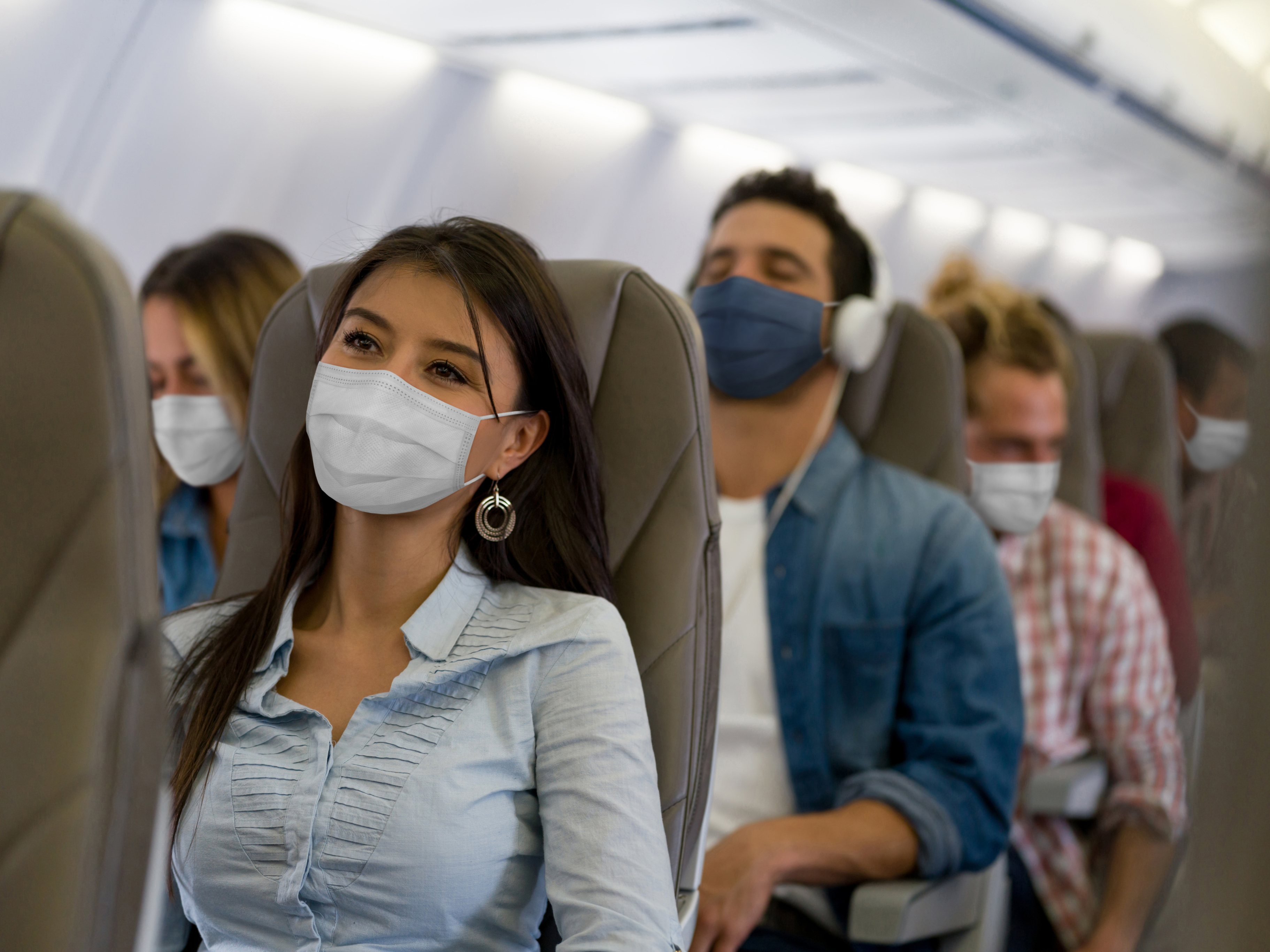 One might think that this would be the end of the subject of the risk of infection in the aircraft. This is a mistake, because you have to look at the situation in detail.
One might think that this would be the end of the subject of the risk of infection in the aircraft. This is a mistake, because you have to look at the situation in detail.
For example, high-performance air filters are standard in aircraft. The modern HEPA filters also filter aerosols from the air. The stale cabin air is sucked out of the room through vents on the floor, cleaned and then fed back into the aircraft cabin through nozzles on the ceiling together with fresh air. The resulting vertical air flow is intended to additionally minimise the distribution of aerosol particles in the room, so that the transmission of pathogens is only possible in the immediate vicinity of the seat.
Wearing a mouth-nose protection can also further reduce the risk of infection in the aircraft. In this way, the aerosol particles are not ejected head-on when speaking and breathing, but the spread is contained over a certain period of time. If it is then possible to maintain a certain distance, contact with foreign aerosols in the aircraft cabin can be reduced to a minimum.
Infectiousness on the plane: The airlines' promise
Many airlines promise their customers that the risk of infection on the plane is negligible. Flying is therefore always safe for all passengers at all times, regardless of whether there is a corona virus or a flu epidemic. However, every passenger should be aware that one can never be 100% sure before starting a flight. What is certain, however, is that the airlines are doing everything in their power, especially during the Corona pandemic, to eliminate the risk of infection on the plane as far as possible.
The airlines are relying primarily on the efficient air filters in the aircraft. The air is completely exchanged every 3-5 minutes. Researchers also conclude that the HEPA filters effectively reduce the transmission of viruses and thus the general risk of infection in the aircraft. In addition, the extremely low humidity on board provides a poor breeding ground for pathogens in advance.
Many airlines also make it possible to keep the recommended distances. Thus, a large part of the flights are intentionally not fully loaded. In addition, passengers are often offered the opportunity to book seats that do not have a seat neighbour.
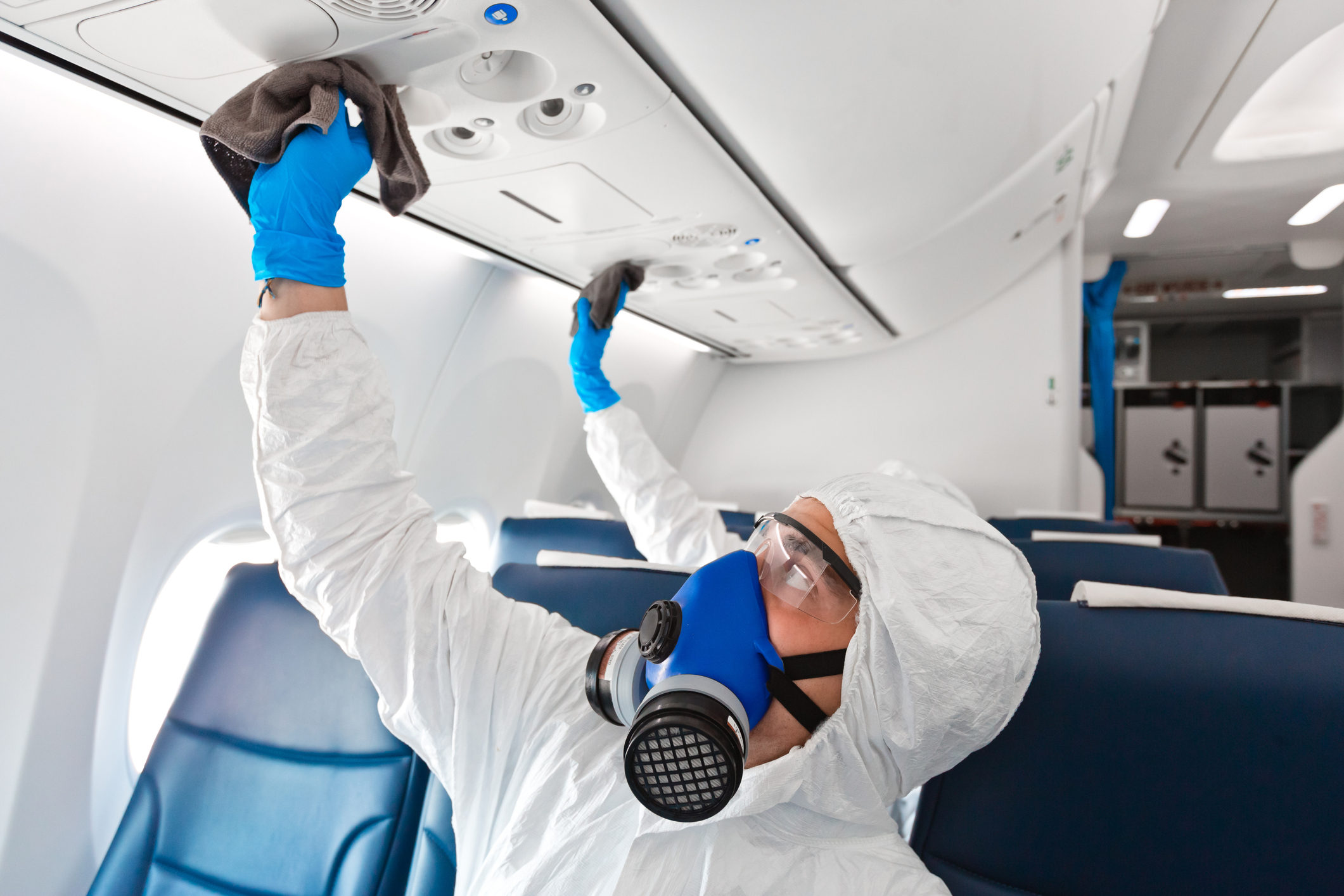
On which flights is the risk of infection on the plane the lowest?
Basically, what you might already be thinking is true: Short-haul is better than long-haul. Although the air filters in the aircraft work at peak performance regardless of the length of the flight, an aircraft cabin is ultimately also a closed space filled with people. The personal responsibility factor plays a crucial role in the topic of contagiousness on the plane, and this is especially true for long-haul flights.
If you sit for a long time, you get restless, hungry or have to go to the toilet. These are all actions that require you to either move around the aircraft cabin or take off your mouth-nose protection. In this way, the risk of infection for oneself and others is automatically increased. These actions naturally increase the longer the flight. Preventing this is virtually impossible, as one's own needs are difficult to ignore. Also, booking numbers on long-haul flights are often higher than on short-haul flights, as long-haul aircraft have more capacity. In conclusion, therefore, it can be said that The risk of contagion in the aircraft on long-haul flights is higher than on short-haul flights.
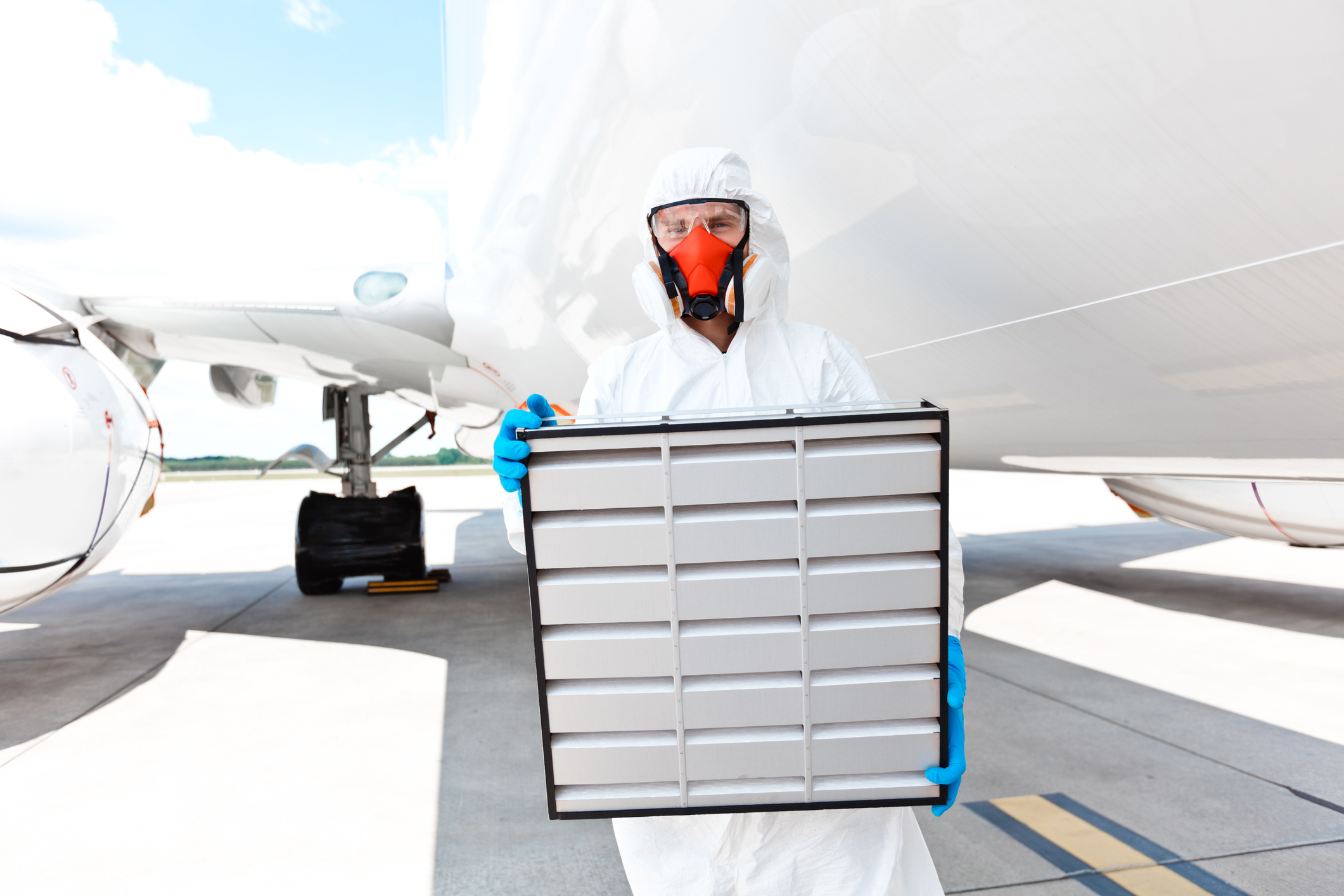
Our tips: Minimise the risk of infection on the plane
How should I behave on board?
It is best to stay in your seat. Standing up and walking around creates turbulence in the air and thus disturbs the vertical air circulation in the cabin. It is also best to remove your mouth-nose protection as infrequently as possible. This means limit eating and drinking on the plane to a necessary minimum to keep the risk of infection as low as possible.Where are the most germs on board?
The risk of infection on the plane is greatest at your seat, not in the lavatory. Germs and viruses lurk especially on the armrests or folding tables. The cabin crews are required to clean these more frequently and thoroughly, but the time windows for this are usually very short. In addition, there is a lot of direct contact with the seats during boarding, when strangers push their way through the rows of seats. Therefore, take a surface disinfectant in the prescribed 100 ml format with you on the plane. The on-board toilets are usually kept reliably clean. However, to avoid unnecessarily increasing the risk of infection on the plane, you should - if possible - close the toilet lid before flushing. This way, no small airborne particles can spread. In addition, disinfect your hands regularly.Everyday or FFP2 mask on the plane?
Wearing a face mask on the plane is advisable and is currently compulsory with most airlines. An FFP2 mask is generally preferable to a conventional everyday mask. This not only protects those around you, but also yourself to a certain extent. Always make sure that the FFP2 mask fits properly, otherwise it will not provide sufficient protection.Where is the best place to sit?
The best place to sit is where there is the least contact with other people. This is typically far back in the plane at a window seat. This way you sit furthest away from the aisle, where the air swirls due to others walking back and forth, and the risk of infection is higher at this point. In addition, you only have a maximum of one direct seat neighbour from whom you can turn your face away completely if you wish.
Travelling is therefore possible even in times of coronavirus or the next wave of flu, without exposing yourself to too high a risk of infection on the plane. Be mindful, follow our tips and always act on the premise that you are responsible for yourself and others.
Stay healthy!

